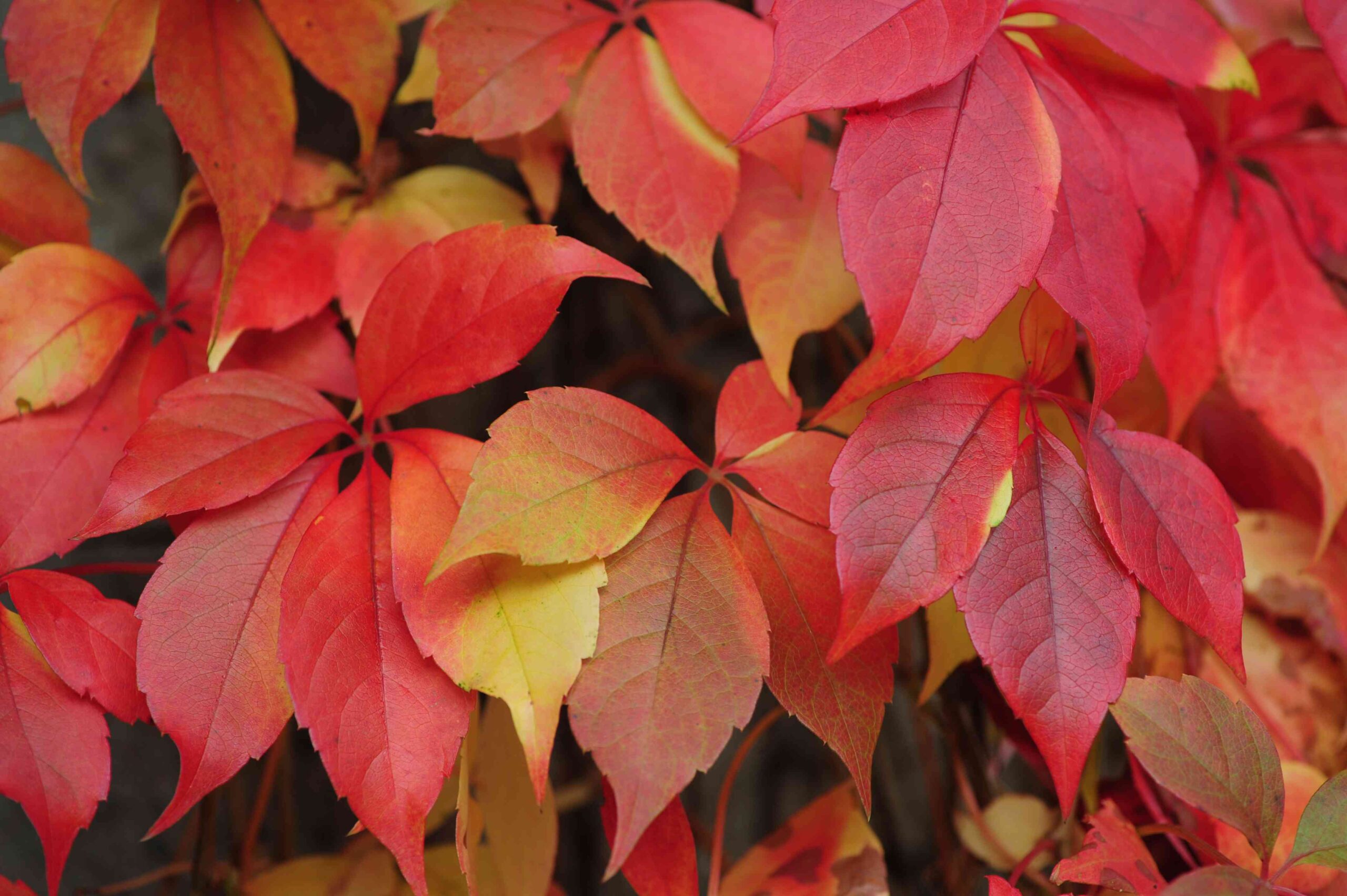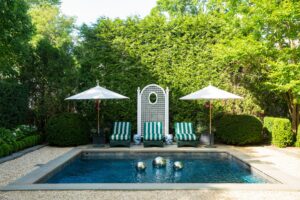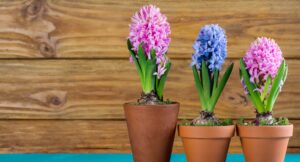10 Shrubs for Fall Leaf Color to Transform Your Autumn Landscape
Embracing Autumn’s Palette in Your Garden
As summer’s vibrant greens begin to fade, the true stars of autumn emerge in gardens across America. Fall-colored shrubs offer a spectacular seasonal show, transforming ordinary landscapes into breathtaking canvases of red, orange, yellow, and purple. While deciduous trees often get the spotlight for fall foliage, many shrubs provide equally impressive displays while fitting perfectly into smaller spaces or serving as foundation plantings.
In this guide, you’ll discover ten exceptional shrubs that deliver stunning fall color to elevate your landscape. These versatile woody plants not only provide structure and interest throughout the year but also burst with incredible hues when temperatures begin to drop. Whether you’re looking to enhance a small urban garden or add visual interest to a sprawling suburban landscape, these selections offer something for every garden style and climate zone.
Why Fall Color Matters in Your Landscape Design
Before diving into specific varieties, it’s worth understanding what causes those magnificent fall color changes. During spring and summer, leaves contain high levels of chlorophyll, which gives them their green color while masking other pigments present in the leaves. As days shorten and temperatures cool, chlorophyll production stops, revealing the hidden yellows, oranges, and reds previously overshadowed.
Fall-colored shrubs provide more than just aesthetic appeal—they extend your garden’s season of interest well beyond summer’s blooms. When strategically incorporated into your landscape plan, these shrubs create focal points that draw the eye and evoke the cozy feeling of autumn. They pair beautifully with ornamental grasses, late-blooming perennials, and evergreens to create a balanced four-season landscape.
According to the USDA Forest Service, environmental factors like temperature, light, and water supply influence the timing, duration, and intensity of fall colors. For the best display, plants typically need a combination of bright sunny days and cool (but not freezing) nights during the color change period. You can learn more about the science behind fall color at the USDA Forest Service website.
Top 10 Shrubs for Spectacular Fall Color
1. Burning Bush (Euonymus alatus)
Few shrubs announce autumn’s arrival as dramatically as burning bush. When the cooler temperatures of fall arrive, this adaptable shrub transforms from an unassuming green backdrop into a blazing crimson beacon in the landscape. The intensity of its scarlet display makes it one of the most popular choices for fall color among American gardeners.
Native to Asia, burning bush typically grows 6 to 8 feet tall and wide, though compact cultivars are available for smaller spaces. Its distinctive corky wings along the branches add winter interest after leaves have fallen. While stunning in autumn, it’s worth noting that burning bush has been designated as invasive in some eastern states due to its prolific self-seeding, so check local regulations before planting.
Best suited for USDA zones 4-8, burning bush thrives in full sun to part shade and adapts to various soil conditions. For the most vibrant fall color, plant in a location that receives at least six hours of direct sunlight daily. A position where it catches afternoon light will make its fiery display even more dramatic as the low autumn sun illuminates the leaves.
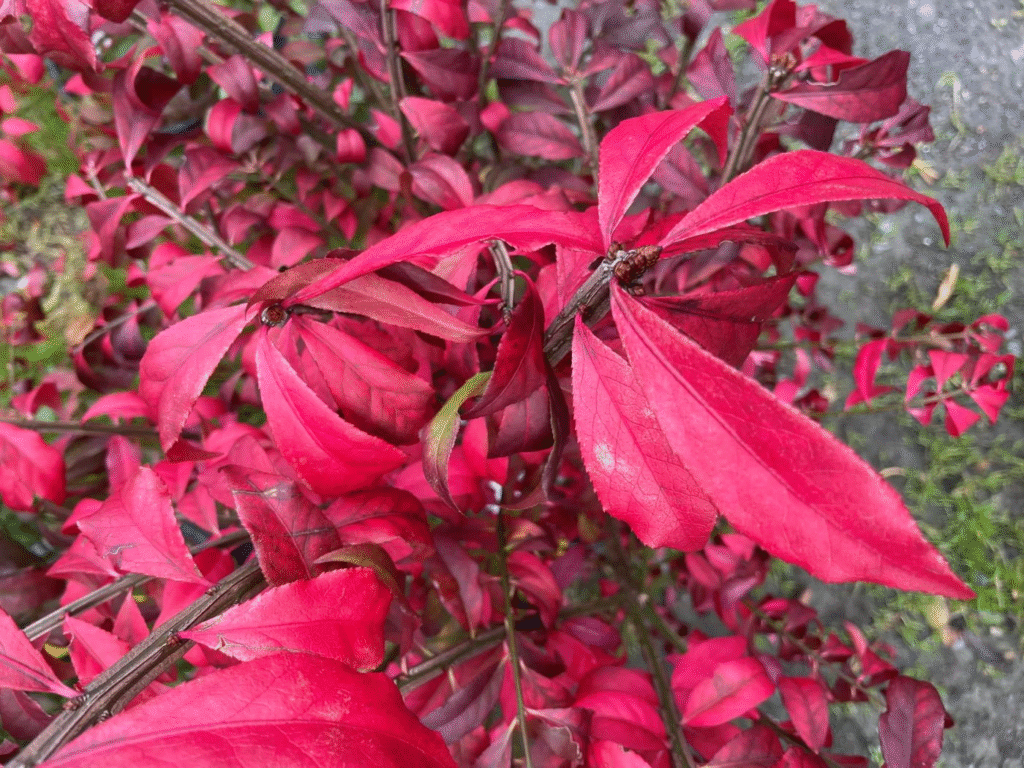
2. Oakleaf Hydrangea (Hydrangea quercifolia)
Unlike its cousins known primarily for their showy flowers, oakleaf hydrangea delivers an impressive fall finale with its large, lobed leaves turning deep burgundy, purple, and russet. This native North American shrub offers multi-season interest, beginning with cone-shaped white flower clusters in summer that fade to an attractive tan as cooler weather arrives.
Growing 4 to 8 feet tall and wide depending on the cultivar, oakleaf hydrangea features distinctive oak-like foliage that provides unique texture throughout the growing season before its autumn transformation. The exfoliating cinnamon-colored bark becomes more visible in winter, adding another dimension of interest after leaf drop.
This versatile shrub performs well in USDA zones 5-9 and appreciates morning sun with afternoon shade, particularly in hotter regions. It prefers well-drained, slightly acidic soil with consistent moisture. Dwarf cultivars like ‘Pee Wee’ and ‘Ruby Slippers’ offer the same impressive fall color for smaller gardens or container plantings.
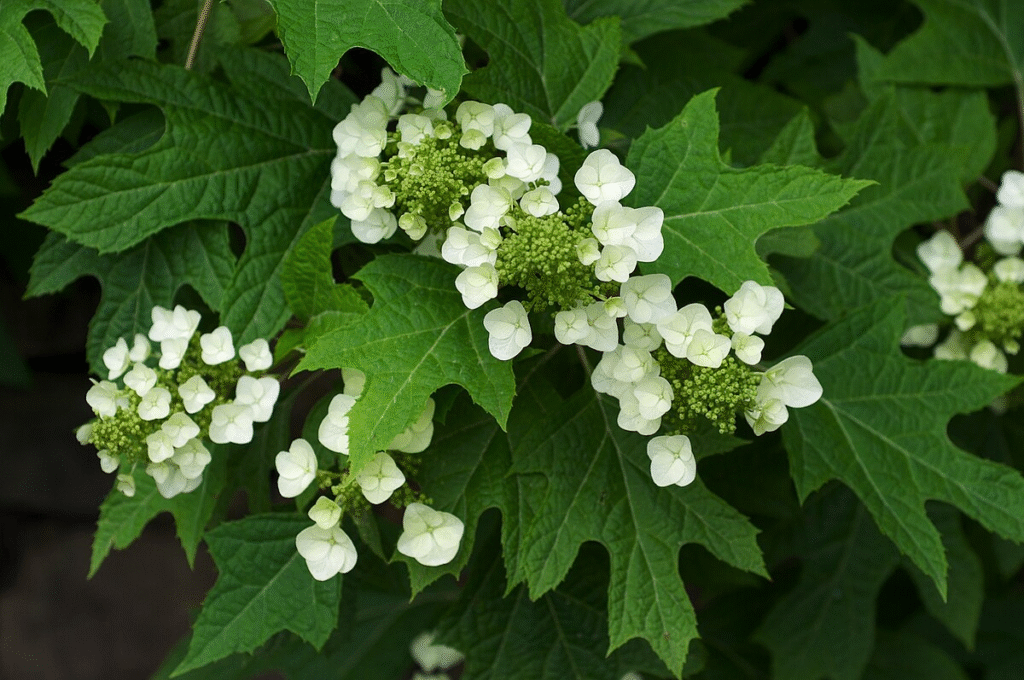
3. Virginia Sweetspire (Itea virginica)
One of the most reliable native shrubs for fall color across diverse growing conditions, Virginia sweetspire produces arching branches covered in glossy green leaves that transform to spectacular shades of crimson, orange, and purple in autumn. This color often persists well into winter, making it a standout in the late-season landscape.
Before its fall display, sweetspire produces fragrant white flower racemes in early summer that cascade like falling stars, attracting pollinators. Compact cultivars like ‘Little Henry’ reach just 2 to 3 feet tall, while the species typically grows 3 to 5 feet in height with a similar spread.
Hardy in USDA zones 5-9, Virginia sweetspire demonstrates remarkable adaptability, thriving in both full sun and partial shade. It even tolerates wet sites where many other shrubs would fail, making it perfect for rain gardens or areas with poor drainage. Its native status also means it provides valuable habitat and food sources for local wildlife.
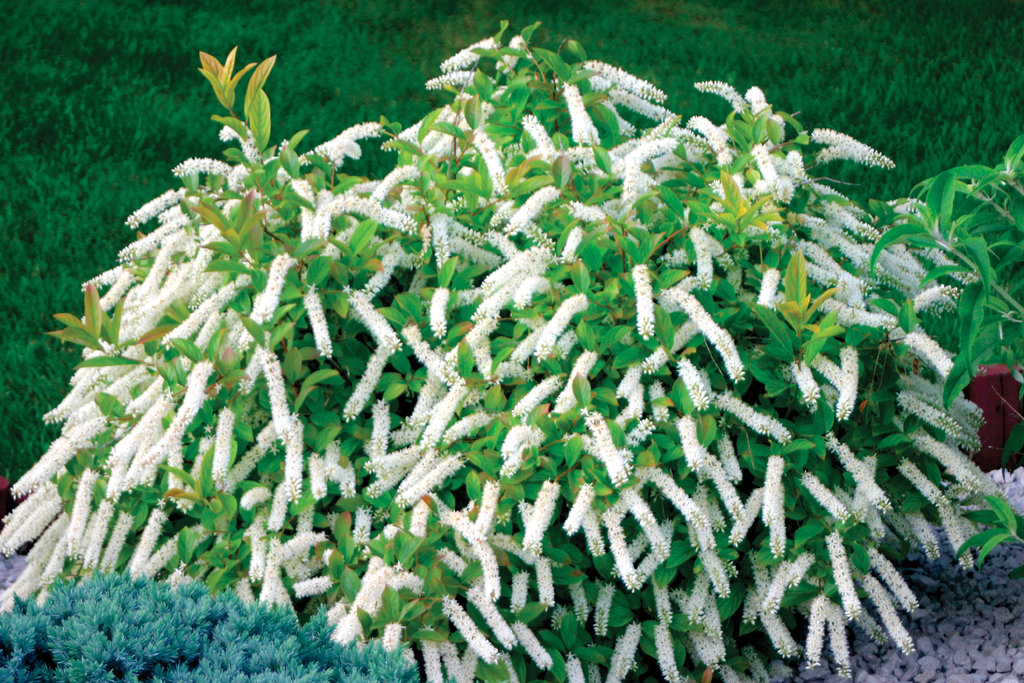
4. Fothergilla (Fothergilla gardenii and F. major)
Often overlooked in garden centers, fothergilla delivers one of the most diverse and vibrant fall color displays of any shrub. Its rounded leaves transform into a mesmerizing blend of yellow, orange, red, and purple—often with multiple colors appearing on a single leaf. This creates a watercolor effect that changes daily as autumn progresses.
Depending on the species, fothergilla ranges from the more compact F. gardenii (2-3 feet tall) to the larger F. major (5-6 feet tall). Both feature bottlebrush-like white flowers in early spring before leaves emerge, providing early-season interest as well.
Native to the southeastern United States, fothergilla grows best in USDA zones 5-8 and prefers acidic, well-drained soil with regular moisture. While it flowers most prolifically in full sun, it often develops better fall color with some afternoon shade, especially in warmer regions. Consider planting fothergilla with evergreen companions to highlight its fall display.

5. Chokeberry (Aronia melanocarpa and A. arbutifolia)
These tough native shrubs offer not just brilliant fall foliage but also nutritious berries that persist into winter. Black chokeberry (A. melanocarpa) and red chokeberry (A. arbutifolia) both produce glossy green leaves that transform to vibrant crimson-purple in autumn, creating a stunning backdrop for their respective black or red fruits.
Typically growing 3 to 6 feet tall depending on the species and cultivar, chokeberries feature delicate white flowers in spring followed by abundant berry production. The fruits, while too astringent for fresh eating, are prized for jams and juices due to their extraordinary antioxidant content.
Hardy in USDA zones 3-8, chokeberries demonstrate remarkable tolerance for difficult conditions, including wet soils, drought, and pollution. They’ll grow in full sun to partial shade, though sunnier positions typically result in more abundant flowering, fruiting, and fall color. Their adaptability and wildlife value make them excellent choices for naturalistic landscapes.
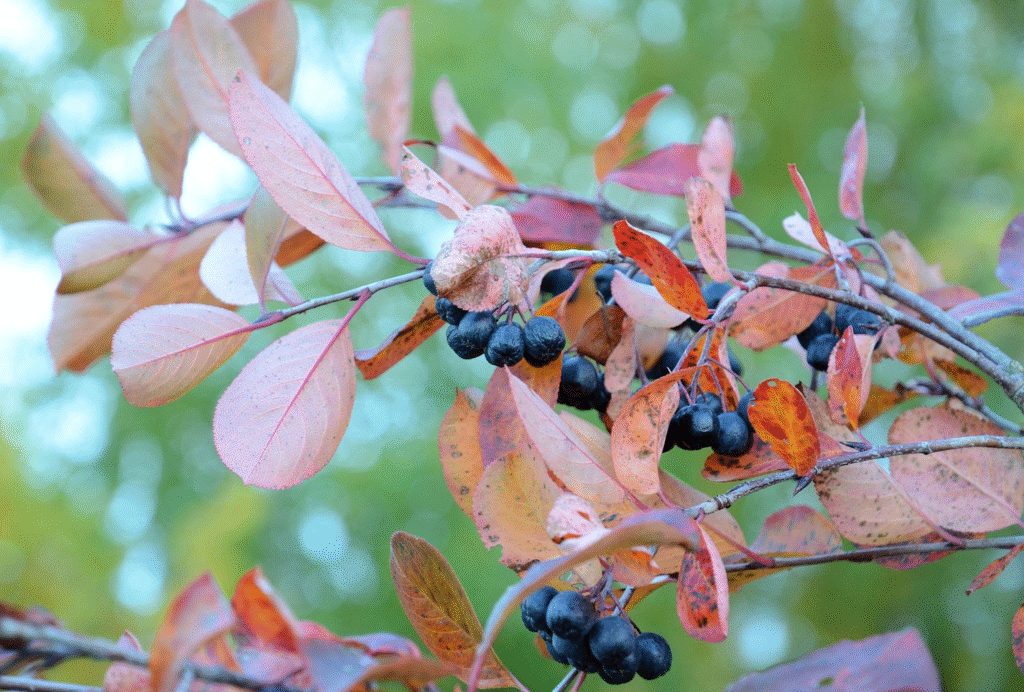
6. Blueberry (Vaccinium species)
While most gardeners grow blueberries for their delicious fruits, these versatile shrubs also provide some of the most spectacular fall color in the landscape. Highbush blueberries (Vaccinium corymbosum) develop fiery crimson foliage that can outshine many ornamental shrubs, while lowbush types (V. angustifolium) offer a more spreading groundcover display of red and purple.
Beyond their autumn appeal, blueberries feature delicate bell-shaped flowers in spring, nutritious summer berries, and often attractive twigs in winter. Highbush varieties typically grow 4 to 6 feet tall, while lowbush types stay under 18 inches in height but spread wider.
Blueberries thrive in USDA zones 3-8 (depending on variety) and require acidic soil (pH 4.5-5.5) for proper growth and fruiting. They prefer consistent moisture and at least six hours of sun daily. Consider planting multiple varieties for better pollination and an extended harvest season—as well as a more diverse fall color display.
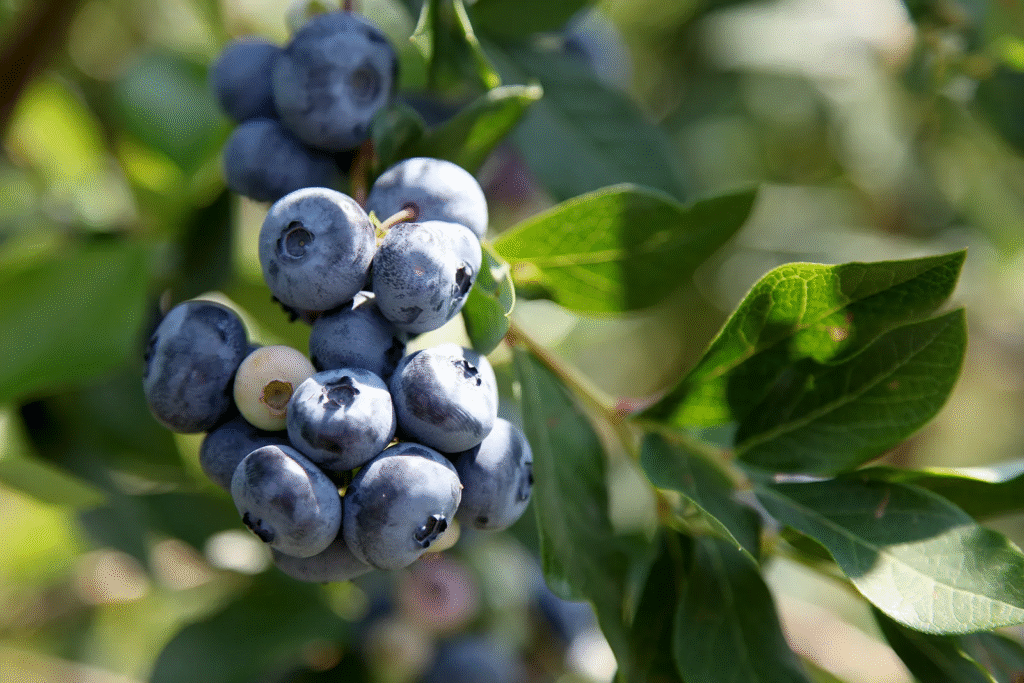
Comparing Fall Color Shrubs by Growing Requirements
When selecting shrubs for your landscape, understanding their growing requirements helps ensure success. The following table compares key attributes of our featured fall color champions:
| Shrub | USDA Zones | Height (feet) | Width (feet) | Sun Requirements | Soil Preferences | Fall Color |
|---|---|---|---|---|---|---|
| Burning Bush | 4-8 | 6-8 | 6-8 | Full sun to part shade | Adaptable | Bright red |
| Oakleaf Hydrangea | 5-9 | 4-8 | 4-8 | Morning sun, afternoon shade | Moist, well-drained | Burgundy, purple |
| Virginia Sweetspire | 5-9 | 3-5 | 3-5 | Full sun to part shade | Adaptable, tolerates wet | Red, orange, purple |
| Fothergilla | 5-8 | 2-6 | 2-6 | Full sun to part shade | Acidic, moist | Yellow, orange, red, purple |
| Chokeberry | 3-8 | 3-6 | 3-6 | Full sun to part shade | Adaptable | Red, purple |
| Blueberry | 3-8 | 1-6 | 2-6 | Full sun | Acidic | Red, orange |
| Sumac | 3-8 | 3-15 | 3-15 | Full sun | Well-drained | Scarlet, orange |
| Viburnum | 4-8 | 5-10 | 5-10 | Full sun to part shade | Moist, well-drained | Burgundy, red, purple |
| Ninebark | 2-8 | 5-10 | 5-10 | Full sun to light shade | Adaptable | Yellow, orange, red |
| Witch Hazel | 3-8 | 10-15 | 10-15 | Full sun to part shade | Moist, well-drained | Yellow, gold, orange |
7. Sumac (Rhus species)
Often mistaken for a small tree rather than a shrub, various sumac species deliver some of the most dramatic fall color transformations in the landscape. Fragrant sumac (Rhus aromatica), staghorn sumac (R. typhina), and smooth sumac (R. glabra) all offer brilliant scarlet to orange autumn foliage that seems to glow when backlit by the sun.
These North American natives range from the compact ‘Gro-Low’ fragrant sumac at just 2 feet tall to the more statuesque staghorn sumac reaching 15 feet in height. Many feature interesting textured bark and architectural branching patterns visible after leaf drop. Female plants produce distinctive red fruit clusters that persist through winter, providing food for birds.
Sumacs thrive in USDA zones 3-8 and prefer full sun and well-drained soil, though they demonstrate remarkable drought tolerance once established. Their suckering habit makes them excellent for naturalized areas and erosion control on slopes, but this spreading tendency should be considered when placing them in more formal landscapes.
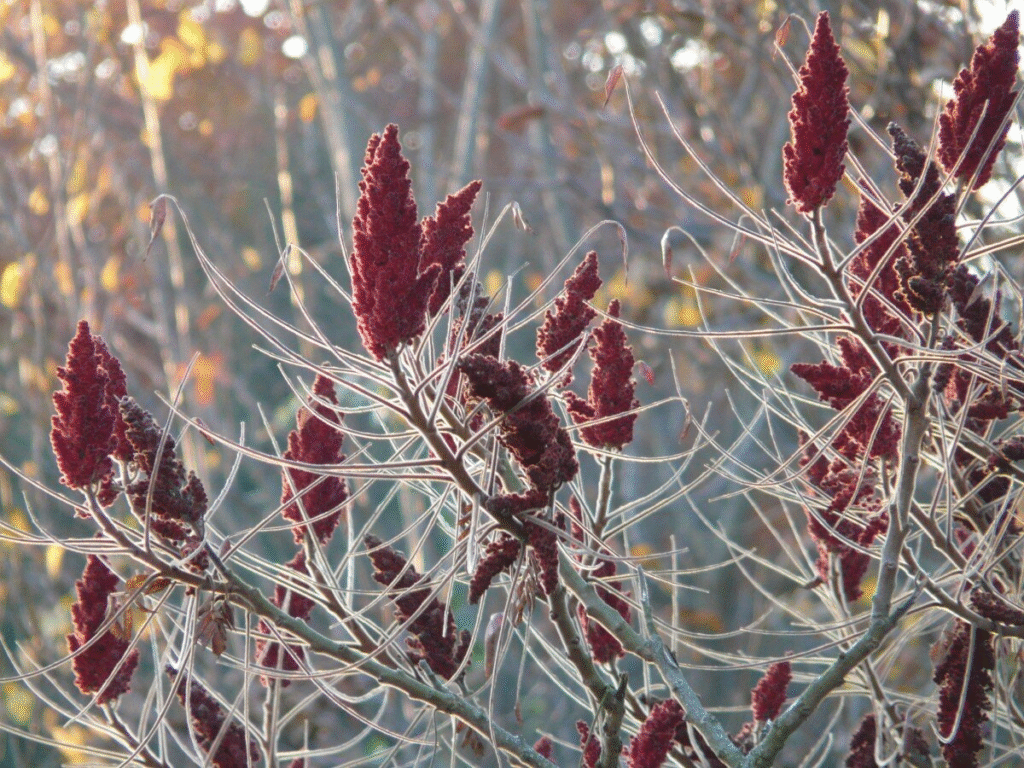
8. Viburnum (Viburnum species)
The diverse viburnum genus includes numerous species and cultivars with outstanding fall color. Blackhaw viburnum (V. prunifolium), mapleleaf viburnum (V. acerifolium), and arrowwood viburnum (V. dentatum) are particularly noted for their burgundy, red, and purple autumn displays.
Most viburnums grow 5 to 10 feet tall and wide, though sizes vary considerably by species. Beyond fall color, they offer showy white flower clusters in spring, often followed by ornamental berries in shades of red, blue, or black that attract birds. Many species also have pleasant fragrance when in bloom.
Hardy in USDA zones 4-8 (varying by species), viburnums generally prefer moist, well-drained soil and full sun to partial shade. Native species like blackhaw and mapleleaf viburnum support local ecosystems by providing food and habitat for wildlife. Their reliability and multi-season interest make them foundation elements in many landscape designs.
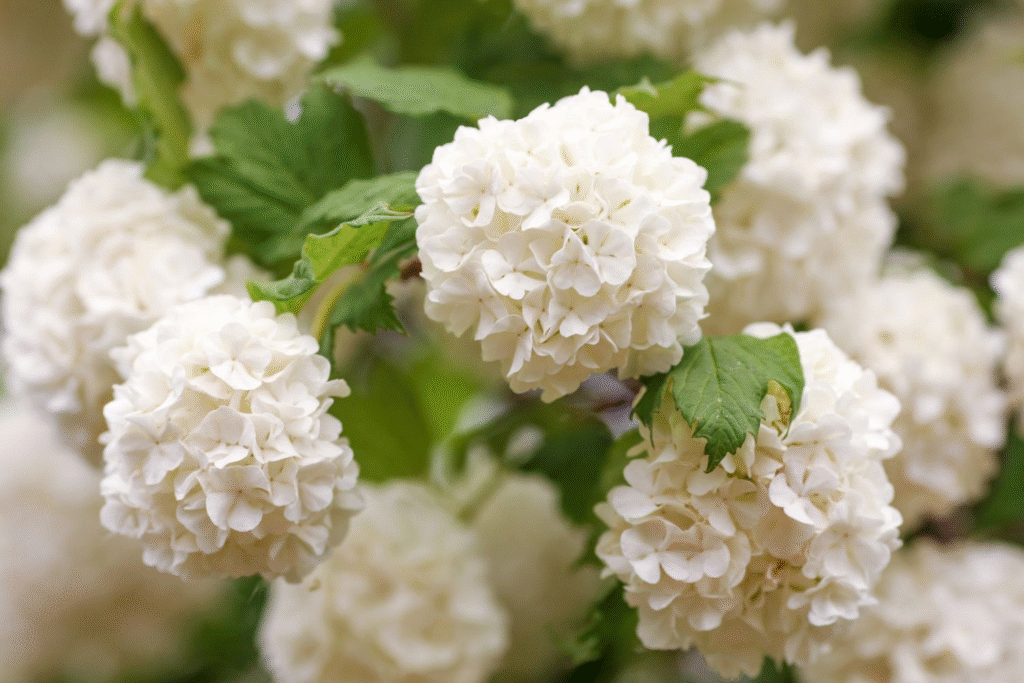
9. Ninebark (Physocarpus opulifolius)
This tough native shrub has gained popularity through cultivars with colorful foliage throughout the growing season, but even green-leaved varieties deliver excellent fall color ranging from yellow and orange to deep red. The exfoliating bark, which peels in thin layers (giving rise to the “ninebark” name), provides additional winter interest.
Most ninebark varieties grow 5 to 10 feet tall and wide, though compact cultivars are available for smaller spaces. White to pink flower clusters appear in late spring, followed by red seed capsules that persist into fall, complementing the changing leaf color.
Exceptionally hardy from USDA zones 2-8, ninebark demonstrates remarkable tolerance for difficult conditions including drought, poor soil, and urban pollution. It grows best in full sun to light shade and adapts to various soil types as long as drainage is adequate. This resilience makes it an excellent low-maintenance choice for busy homeowners.
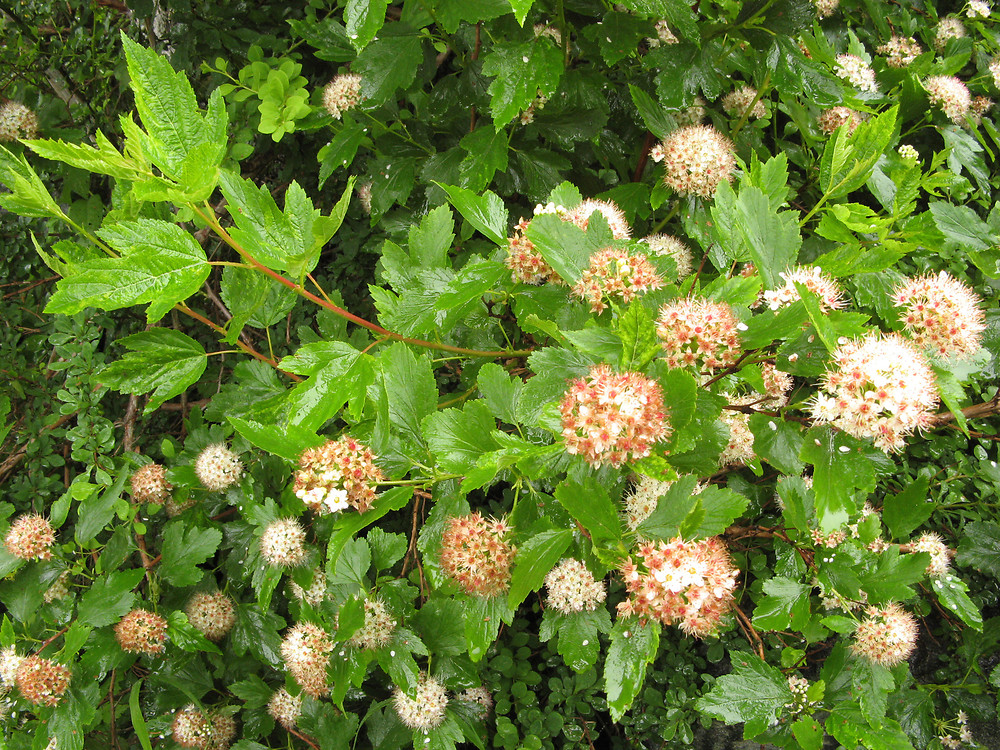
10. Witch Hazel (Hamamelis species)
Closing our list is a shrub that bridges the seasons with both fall color and winter blooms. Common witch hazel (Hamamelis virginiana) displays golden yellow autumn foliage and blooms in late fall, while vernal witch hazel (H. vernalis) and Chinese witch hazel (H. mollis) offer colorful leaves followed by fragrant flowers in late winter.
Larger than many shrubs, witch hazels typically grow 10 to 15 feet tall and wide with a vase-shaped habit. Their spidery flowers in yellow, orange, or red (depending on species) appear when little else is blooming, making them especially valuable in the seasonal transition zones of the garden year.
Most witch hazels perform best in USDA zones 3-8 with full sun to partial shade and consistently moist, well-drained soil rich in organic matter. They prefer slightly acidic conditions and benefit from protection from harsh afternoon sun in hotter regions. Their unique flowering time and excellent fall color make them worthy focal points in the landscape.
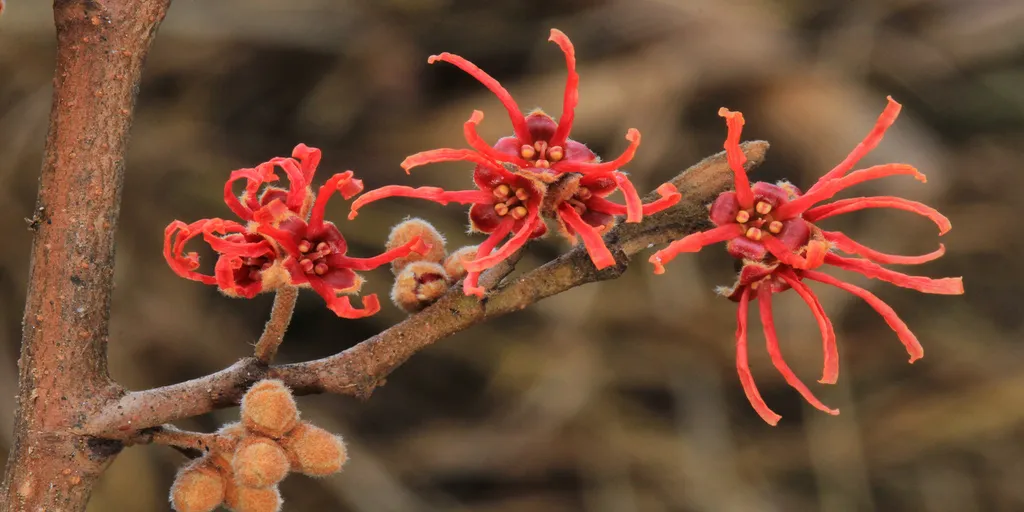
Designing with Fall Color Shrubs
Now that you’re familiar with these autumn standouts, consider how to incorporate them into your landscape for maximum impact. Here are some design strategies to enhance your fall garden:
Create color echoes by pairing shrubs with complementary fall perennials like asters, goldenrod, and ornamental grasses. The movement and texture of grasses particularly complement the solid forms of woody shrubs.
Consider placement carefully—position fall color shrubs where they’ll be backlit by morning or late afternoon sun to make their foliage appear to glow from within. Viewing locations from inside your home are especially important, allowing you to enjoy the display even on chilly autumn days.
Layer different heights of fall color plants, using taller shrubs like witch hazel or viburnum as backdrop for mid-sized plants like fothergilla, with groundcovers adding color at the lowest level. This creates depth and interest throughout the landscape.
Don’t overlook the power of contrast—bright yellow witch hazel foliage looks even more striking when paired with the deep purple leaves of oakleaf hydrangea or the evergreen texture of conifers.
Caring for Fall Color Shrubs
Most of the shrubs mentioned require minimal maintenance once established, but a few care considerations will help ensure the best possible fall display:
Water consistently during the first two growing seasons to establish deep root systems. Even drought-tolerant species need regular moisture while becoming established.
Apply a 2-3 inch layer of organic mulch around (but not touching) the base of shrubs to conserve moisture, moderate soil temperature, and slowly add nutrients as it breaks down.
Pruning should be timed according to each shrub’s flowering cycle—spring bloomers should be pruned immediately after flowering, while those that bloom on new wood can be pruned in late winter or early spring.
Fertilization is typically unnecessary for established native shrubs in decent soil, but a light application of balanced organic fertilizer in spring can benefit plants in poor soils.
Conclusion: Extending Your Garden’s Season of Beauty
By incorporating these fall color champions into your landscape, you extend your garden’s peak season well beyond summer’s flowers. The fiery displays of these shrubs transform autumn from a time of garden decline into a spectacular finale before winter’s rest.
Whether you have space for just one compact fothergilla or room for a dramatic grouping of viburnums and witch hazels, these versatile shrubs deserve consideration in any landscape design. Their combination of easy care, multi-season interest, and spectacular fall finale makes them valuable additions to gardens across America.
As you plan your fall landscape, remember that many of these shrubs also provide important ecological benefits—particularly the native species that support local birds and beneficial insects. By choosing plants that offer both beauty and habitat value, you create a landscape that’s not only visually stunning but also environmentally meaningful.
